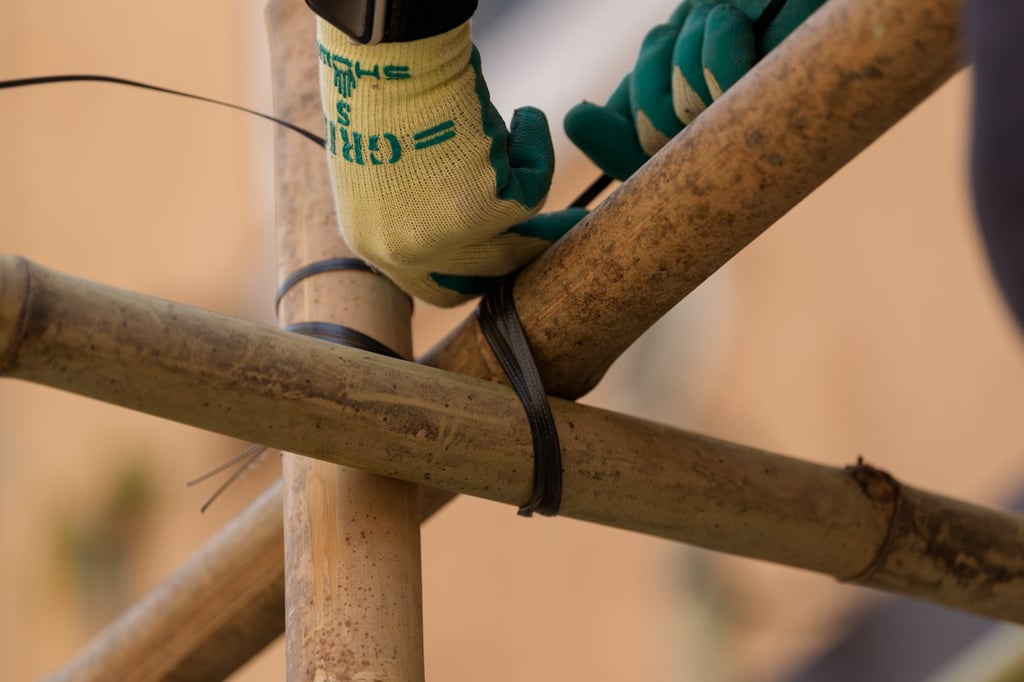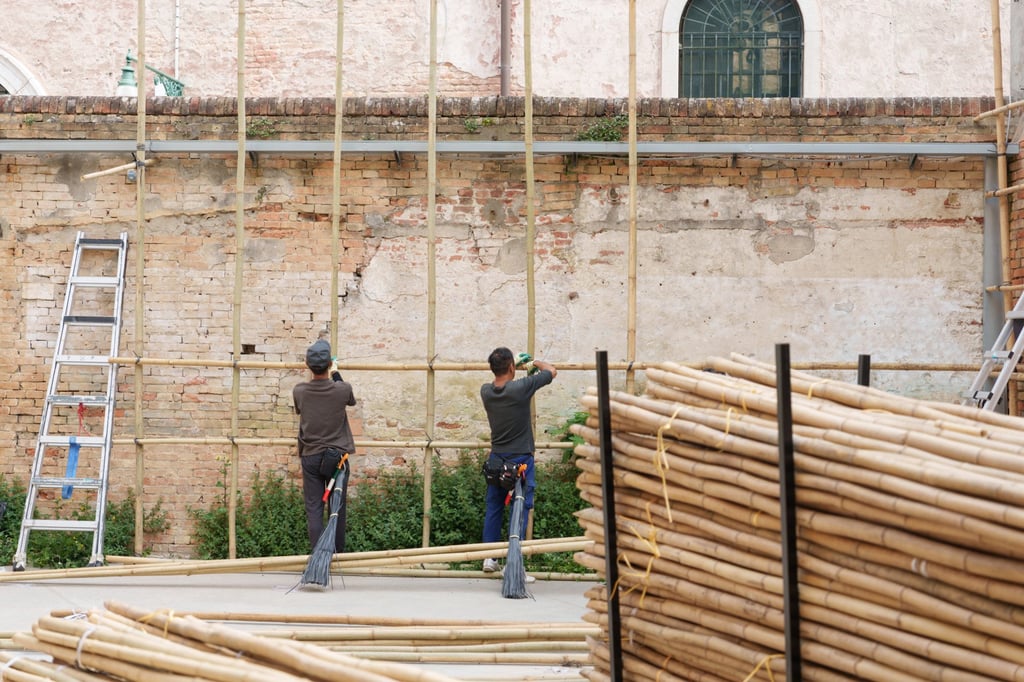The world is discovering bamboo scaffolding – as Hong Kong phases it out
Skyscrapers clad in bamboo poles have been an iconic part of the city’s landscape, earning the material a place at the Venice Biennale

If you visit Venice, Italy, this year and stumble upon a courtyard wrapped in a lattice of bamboo poles, you might think you’ve been transported to the streets of Hong Kong. But it isn’t a mirage – it’s the SAR’s official contribution to the Venice Biennale of Architecture.
The installation stands out for its utilitarian aesthetic. Designed by Hong Kong-based Beau Architects and the Architecture Land Initiative (a Swiss- and Hong Kong-based architectural cooperative), in collaboration with master scaffolder Choi Wing-kei, it wraps around the historic villa on Campo della Tana that hosts Hong Kong’s annual contribution to the biennale, whose art and architecture editions alternate every year.

“We wanted to celebrate local craft rather than imposing any sort of pretentious architecture,” says Beau Architects director Charlotte Lafont-Hugo. “I like the raw, honest aspect of it. It’s a little drop of Hong Kong in Venice.”
